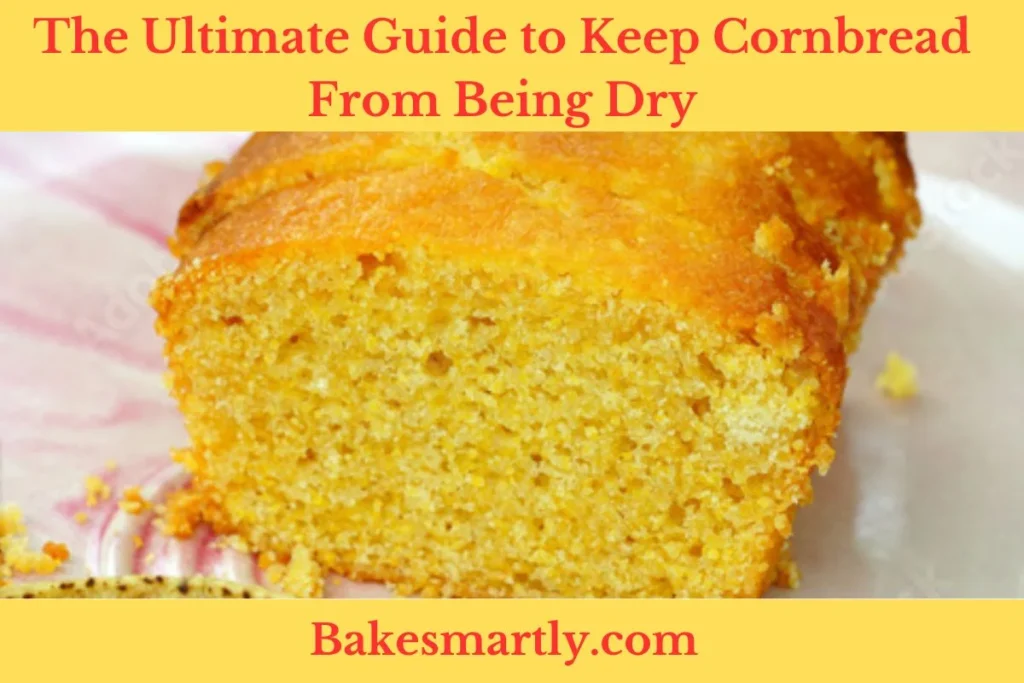
6 Reasons Why Your Brioche Dough Doesn’t Rise + (Solutions)
I love making brioche because it has this amazing rich and buttery taste, and the texture is just so tender. It’s the kind of bread every baker dreams of mastering. But let me tell you, getting that perfect rise in brioche dough can be a bit tricky.
Even for someone like me who’s been baking for a while, it can get frustrating.
In this blog post, I want to share with you six common reasons why your brioche dough might not be rising as it should, and of course, some practical solutions to tackle those challenges
Table of Contents
ToggleReason 1: Yeast Not Activated Enough
One big reason your brioche dough might not rise well is because the yeast isn’t doing its job properly. Yeast is alive and makes gas that helps the dough puff up. But if the yeast isn’t activated right, it won’t do its job in making the dough rise.
Solution:
Make sure your yeast is fresh and not expired. Test it by mixing it with warm water and a little sugar. If it doesn’t bubble up in 5-10 minutes, it’s probably not good, and you should get new yeast.
Use water that’s just warm – not too hot or too cold – to wake up the yeast. Extreme temperatures can mess with how well the yeast works.
Give the yeast enough time to get going before you mix it into the dough. It’s important to be patient here for a good rise.
Reason 2: Not Enough Kneading
Kneading the dough right is super important for making sure the gluten develops well. This gives the dough structure and helps it hold onto the gas the yeast makes. If you don’t knead enough, the dough might not have the strength to hold the gas.
Solution:
Follow the kneading instructions exactly as the recipe says. Different flours and recipes need different kneading times, so take your time with this step.
Check if the gluten’s developed enough by doing the windowpane test. Pull a small piece of dough between your fingers – if it stretches into a thin, see-through film without breaking, it’s good to go.
Consider using a stand mixer with a dough hook for easier and more even kneading.
Reason 3: Using Cold Ingredients
Cold ingredients can slow down the rising process because yeast likes warmth. If your ingredients or kitchen are too cold, it can make the dough rise slower.
Solution:
Make sure all your ingredients, like eggs, milk, and butter, are at room temperature before you use them. This helps the yeast work better and speeds up the rising.
If your kitchen is chilly, find a warmer spot for the dough to rise. You can try putting it in a slightly warm oven or a spot without drafts to help it along.
Reason 4: Too Much Butter
Butter is great in brioche, but too much can make the dough heavy and dense. It can also mess with how the gluten forms and trap the gas from the yeast.
Solution:
Stick to the recommended amount of butter in the recipe. Brioche usually has more butter than regular bread, but going overboard can ruin the rise.
Add the butter slowly as you mix the dough. Let each bit mix in completely before adding more. This way, the butter spreads evenly without weighing down the dough.
Try using butter with a higher melting point. It’ll blend better into the dough and won’t make it heavy.
Reason 5: Not Enough Time for Proofing
Letting the dough rise after shaping it is important. If you rush this step, the yeast won’t have enough time to make the dough rise properly.
Solution:
Follow the proofing times in the recipe. The temperature and humidity of your kitchen can affect how fast the dough rises, so keep an eye on it instead of just relying on the clock.
Find a warm, still place for the dough to rise. A bit of warmth helps the yeast do its job faster and makes the dough rise better.
Think about doing a double proof. After the first rise, gently push the air out of the dough, shape it again, and let it rise a second time. This can give you a fuller rise and a nicer texture.
Reason 6: Oven Spring Not Good
The final rise in the oven is really important too. If the oven’s too hot or too cold, or if the dough isn’t shaped right, your brioche won’t puff up like it should.
Solution:
Preheat your oven to the temperature the recipe says. Starting with a hot oven helps the dough rise well and bake evenly.
Shape the dough carefully before baking. A tight shape helps the dough keep its form during baking, which helps it rise better.
Try using a pizza stone or a hot baking sheet in the oven. This creates steam in the oven when you first put the dough in, which helps it puff up nicely.

Expert Tips for Successful Brioche Dough Rising
Brioche, with its delicate texture and rich flavor, demands precision in the rising process. Here are some expert tips to ensure your brioche dough rises flawlessly, resulting in a light and airy loaf that’s sure to impress.
Tip 1: Temperature Control
Maintaining the right temperature throughout the entire process is crucial for successful brioche dough rising. Ensure that your ingredients, especially liquids like milk and eggs, are at room temperature.
A slightly warmer environment, around 75°F to 80°F (24°C to 27°C), encourages optimal yeast activity. If your kitchen is on the cooler side, consider using a slightly warmed oven or placing the dough in a draft-free area to create an ideal fermentation environment.
Tip 2: Precise Measurement
Accurate measurement of ingredients is paramount in brioche baking. Use a kitchen scale to measure flour, butter, and other ingredients precisely.
Consistency in measurements ensures the right balance of flour to liquid, helping the dough achieve the desired texture and rise. Even minor discrepancies can affect the overall structure and flavor of the final product.
Tip 3: Quality Ingredients
The quality of your ingredients directly impacts the outcome of your brioche. Choose high-quality flour, fresh yeast, and good-quality butter for the best results.
Fresh, wholesome ingredients contribute to the overall flavor and texture of the brioche and provide the yeast with the necessary nutrients for a robust fermentation process.
Tip 4: Patience in Proofing
Patience is a virtue when it comes to proofing brioche dough. Follow the recommended proofing times in your recipe, but also pay attention to the visual cues.
Look for a doubled or tripled volume, and observe the dough’s appearance – it should be airy and have a slightly domed shape. Rushing the proofing process can lead to a lackluster rise, affecting the final texture of the brioche.
Tip 5: Consistent Kneading
Achieving the right texture in brioche dough requires consistent and thorough kneading. Whether kneading by hand or using a stand mixer, follow the recommended times in your recipe.
The dough should pass the windowpane test, indicating that the gluten is well-developed and capable of trapping carbon dioxide during fermentation.

How Do I Make Brioche Rise Faster?
Brioche is known for its slow fermentation and rich flavor, but sometimes you need it to rise faster. Whether you’re short on time or just want it done quicker, here are some ways to speed up the process without sacrificing quality.
- Make sure your yeast is fresh and use instant yeast if you can. Activate it in warm water with a little sugar, aiming for a temp between 105°F to 115°F.
- Yeast likes warmth, so find a cozy spot for your dough. You can put it in a slightly warm oven (around 75°F to 80°F), or wrap it with a warm towel, or put it near a heat source. Just don’t make it too hot or it might mess with the yeast.
- You can add a bit more yeast than the recipe calls for to make it rise faster. Just be careful not to add too much or it might taste weird.
- Try double-proofing. After the first rise, gently squish the dough down, shape it again, and let it rise a second time. This can speed things up and give you a nice, full rise.
- Warm up your baking pan before putting the dough in. It helps the dough rise faster in the oven. Just don’t make it too hot or it might cook unevenly.
- Adding a bit of vital wheat gluten to your dough can make it rise faster too. This is handy if you’re using a flour with low protein and need some extra help.

Troubleshooting Other Common Brioche Dough Problems
When you’re making brioche, getting that perfect rise is super important. But sometimes, stuff goes wrong along the way. Let’s talk about how to fix those problems so your brioche comes out perfect every time.
Problem 1: Dense Texture
Cause: A dense brioche can result from various factors, including overmixing the dough, inadequate proofing, or using old yeast.
Solution:
- Gentle Mixing: Avoid overmixing the dough, as excessive kneading can lead to a dense texture. Follow the recommended mixing times, and if using a stand mixer, use the lowest speed necessary to achieve proper gluten development.
- Proper Proofing: Ensure sufficient proofing time, allowing the yeast to create enough carbon dioxide for a light and airy texture. A visual cue, such as a doubled or tripled volume, is often more reliable than a specific timeframe.
- Fresh Ingredients: Check the freshness of your yeast and other ingredients. Old yeast may not be as effective in leavening the dough, leading to a less-than-optimal rise. Use fresh, quality ingredients for the best results.
Problem 2: Crumbly or Dry Texture
Cause: A crumbly or dry texture can result from insufficient hydration, overbaking, or using too much flour.
Solution:
- Hydration Adjustment: Ensure that you’re measuring your ingredients accurately, particularly the liquids. If the dough appears dry during mixing, add a small amount of liquid until it reaches the desired consistency.
- Watch Baking Time: Avoid overbaking, as this can lead to a dry texture. Follow the recommended baking time in your recipe and check for doneness a few minutes before the minimum suggested time.
- Flour Measurement: Use a kitchen scale to measure flour accurately. Too much flour can absorb too much liquid, resulting in a crumbly texture. Adjust the flour quantity as needed to achieve the right dough consistency.
Problem 3: Uneven Rise
Cause: Uneven rising can occur due to inconsistent shaping, improper dough placement during proofing, or uneven oven temperatures.
Solution:
- Even Shaping: Pay careful attention to shaping the dough evenly. Tightly shaped dough retains its structure better during proofing and baking. Ensure uniformity to promote an even rise.
- Proper Proofing: Place the shaped dough in a draft-free area for proofing to encourage an even rise. If using multiple pans, space them appropriately to allow for uniform airflow.
- Oven Calibration: Check and calibrate your oven regularly to ensure an even temperature throughout the baking process. Uneven oven temperatures can lead to inconsistencies in rising.
Problem 4: Excessive Browning
Cause: Excessive browning on the crust can result from a too-hot oven, prolonged baking, or an overly sugary glaze.
Solution:
- Correct Oven Temperature: Preheat your oven to the temperature specified in the recipe. If your oven tends to run hot, consider reducing the temperature slightly to prevent excessive browning.
- Monitor Baking Time: Keep a close eye on the brioche during baking and check for doneness a few minutes before the minimum recommended time. Cover the top with aluminum foil if it’s browning too quickly.
- Adjust Glaze: If using a sugary glaze, consider reducing the sugar content or applying it toward the end of the baking time to prevent excessive caramelization.
Problem 5: Stale Flavor
Cause: Brioche should have a fresh, buttery flavor. Stale or bland taste can result from using old ingredients, insufficient salt, or underfermented dough.
Solution:
- Fresh Ingredients: Ensure that all your ingredients, especially yeast and dairy products, are fresh and within their expiration dates. Fresh ingredients contribute to a vibrant flavor.
- Salt Adjustment: Salt enhances the overall flavor of brioche. Ensure you’re using the recommended amount of salt in your recipe. A small increase can sometimes elevate the taste without making it salty.
- Adequate Fermentation: Allow the dough sufficient time to ferment and develop flavor. Underfermented dough may lack the complex taste associated with well-made brioche.
Problem 6: Collapsed Shape
Cause: Brioche collapsing during or after baking can result from overproofing, inadequate shaping, or insufficient gluten development.
Solution:
- Monitor Proofing: Avoid overproofing the dough, as this can lead to a weakened structure and subsequent collapse. Follow the recommended proofing times and watch for visual cues indicating proper fermentation.
- Tight Shaping: Ensure that the dough is shaped tightly before proofing and baking. A well-shaped brioche maintains its structure during rising and baking, preventing collapse.
- Proper Gluten Development: Adequate gluten development is crucial for the structure of brioche. Follow the recommended kneading times and perform the windowpane test to ensure proper gluten strength.
Why Your Brioche Dough Doesn’t Rise | Conclusion
Achieving the perfect rise in brioche dough requires attention to detail, patience, and a thorough understanding of the factors influencing fermentation.
By addressing these common issues and implementing the suggested solutions, you’ll be well on your way to mastering the art of making brioche with a delightful rise and an irresistible flavor. Happy baking!
Lindsey Mackenzie
About me
Hi there! I’m Lindsey Mackenzie, the founder of Bake Smartly. Baking has been my passion since childhood, growing up in my father’s bakery. With Bake Smartly, I’m excited to share my love for all things sweet and savory. Join me on this delicious journey as we whip up scrumptious treats and sprinkle joy into every bite!






